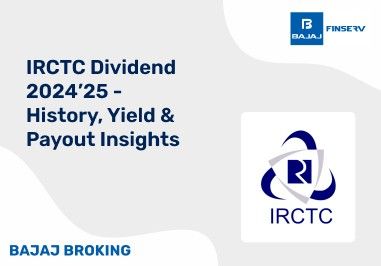BAJAJ BROKING
Tankup Engineers IPO is Open!
Open a Free Demat Account
Trade Now, Pay Later with up to 4x
Track Market Movers Instantly
Indian Union Budget Highlights: Direct Taxes
Personal income tax threshold revised: NIL up to ₹12 lakh under the new regime.
TDS threshold for senior citizens increased: Raised from ₹50,000 to ₹1 lakh.
TDS rate on rent threshold increased: Now ₹6 lakh per annum vs ₹4.2 lakh earlier.
Two self-occupied properties now allowed: Taxpayers can now claim tax benefits on two self-occupied properties.
TCS on education remittance removed: If the remittance is funded through a loan from a specified financial institution.
Threshold for collecting tax at source (TCS) on remittances under LRS: Increased from ₹7 lakh to ₹10 lakh.
Updated return filing period extended: Now 4 years instead of 2 years to encourage voluntary compliance.
New income tax bill to be introduced next week: Designed to simplify tax structures, reduce litigation, and promote voluntary compliance.
Tax slabs and rates to be changed across the board.
The Indian Union Budget 2025-26 has introduced significant direct tax reforms, focusing on ease of compliance, rationalizing tax structures, and enhancing taxpayer benefits. The government's approach is centered on increasing disposable income, promoting investment, and streamlining tax processes to ensure a more taxpayer-friendly regime.
A Shift Towards the New Regime
New Income Tax Bill to emphasize a “trust first, scrutinize later” approach to reduce litigation and enhance compliance.
Personal income tax exemption limit raised to ₹12 lakh, providing relief to middle-class taxpayers.
Tax slabs revised across the board, making the new regime more attractive.
Senior citizens benefit from an increase in the tax deduction limit on interest income from ₹50,000 to ₹1 lakh.
Time limit for filing updated returns extended from two years to four years, allowing greater flexibility for taxpayers.
TDS & TCS Rationalization:
TDS threshold on rent increased from ₹4.2 lakh to ₹6 lakh per annum.
TCS on education remittances removed if funded through an educational loan.
TCS threshold for foreign remittances under LRS increased from ₹7 lakh to ₹10 lakh.
Taxpayers can now own two self-occupied properties tax-free, reducing tax burden and encouraging home ownership.
Corporate tax rates remain unchanged, ensuring policy stability for businesses.
Faster approvals for mergers & acquisitions, supporting business expansion.
FDI limit in the insurance sector raised to 100%, attracting foreign investments in financial services.
Simplification and transparency in the tax structure reinforce the government's focus on ease of compliance and economic stability.
Introduction of a New Income Tax Bill
As a significant reform for the middle-class and salaried individuals, the government has announced the introduction of a new Income Tax Bill next week. This initiative aims to simplify tax laws, reduce litigation, and modernize the tax system, ensuring greater transparency and ease of compliance for taxpayers.
The proposed bill follows the government's commitment to a "trust first, scrutinize later" approach, emphasizing faceless assessments, faster processing of returns, and a streamlined regulatory framework.
This move is expected to provide greater clarity, reduce compliance burdens, and enhance voluntary tax compliance, marking a major shift in India's direct taxation landscape.
Taxation Updates
The Union Budget 2025-26 introduces key changes to capital gains taxation as part of the government's efforts to simplify and rationalize tax structures:
New Income Tax Bill to be introduced next week; further details on capital gains tax reforms will be outlined in the upcoming bill.
Tax slabs and rates revised across the board, with a focus on enhancing ease of compliance.
Continued reforms in taxation of financial instruments to streamline complexities and boost investor participation.
Disclaimer: Investments in the securities market are subject to market risk, read all related documents carefully before investing.
This content is for educational purposes only. Securities quoted are exemplary and not recommendatory.
For All Disclaimers Click Here: https://www.bajajbroking.in/disclaimer
Share this article:
Read More Blogs
Disclaimer :
The information on this website is provided on "AS IS" basis. Bajaj Broking (BFSL) does not warrant the accuracy of the information given herein, either expressly or impliedly, for any particular purpose and expressly disclaims any warranties of merchantability or suitability for any particular purpose. While BFSL strives to ensure accuracy, it does not guarantee the completeness, reliability, or timeliness of the information. Users are advised to independently verify details and stay updated with any changes.
The information provided on this website is for general informational purposes only and is subject to change without prior notice. BFSL shall not be responsible for any consequences arising from reliance on the information provided herein and shall not be held responsible for all or any actions that may subsequently result in any loss, damage and or liability. Interest rates, fees, and charges etc., are revised from time to time, for the latest details please refer to our Pricing page.
Neither the information, nor any opinion contained in this website constitutes a solicitation or offer by BFSL or its affiliates to buy or sell any securities, futures, options or other financial instruments or provide any investment advice or service.
BFSL is acting as distributor for non-broking products/ services such as IPO, Mutual Fund, Insurance, PMS, and NPS. These are not Exchange Traded Products. For more details on risk factors, terms and conditions please read the sales brochure carefully before investing.
Investments in the securities market are subject to market risk, read all related documents carefully before investing. This content is for educational purposes only. Securities quoted are exemplary and not recommendatory.
For more disclaimer, check here : https://www.bajajbroking.in/disclaimer
Our Secure Trading Platforms
Level up your stock market experience: Download the Bajaj Broking App for effortless investing and trading













